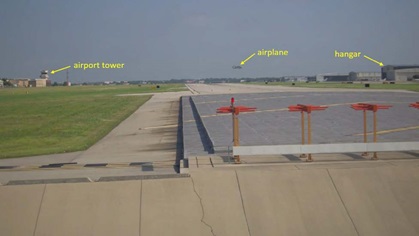Rudder misapplication cited in fatal King Air crash
NTSB determines probable cause of 2019 plunge into hangar
Investigators found no faults in the left engine of a Beechcraft King Air 350 that stopped producing power just before the aircraft rolled to inverted and crashed into a hangar 17 seconds after takeoff from Addison, Texas, on June 30, 2019. The crash killed both pilots and eight passengers on a private flight to Florida.
The pilot, identified in local news reports as Howard Cassady, 71, and his 28-year-old co-pilot Matthew Palmer, left evidence of their impatience on the cockpit voice recorder recovered from the charred wreckage and transcribed by NTSB investigators. The flight crew appeared to be in a hurry to get their eight passengers to Florida. The audio transcript begins with two unsuccessful calls to manufacturer technical support attempting to activate avionics software, which may account for a later series of audible chimes that the crew did not verbally acknowledge. In fact, very little was said between the two pilots during engine start, taxi, or takeoff.
While a detailed post-crash examination of the left engine and control systems “found no condition that would have prevented normal operation,” the NTSB report states that there was a known risk that engine power levers could move without pilot intent if the friction lock was not appropriately adjusted, one of several items on the pretakeoff checklist that was not audibly performed. A few seconds after developing full power, the left engine stopped producing thrust, and the aircraft, never more than 100 feet off the ground, soon began to roll.
According to the CVR transcript, sounds consistent with rotation and liftoff were captured at 9:10 a.m., followed 5.9 seconds later by Cassady’s exclamation: “What in the world?” The microphone then picked up a click, followed by a sound similar to a stall warning, and, two seconds later, first officer Palmer’s reply: “You just lost your left engine.”
“The pilot responded to the emergency with left rudder input, the opposite action of what the emergency called for,” the NTSB noted in its news release. “Seconds later, the pilot applied right rudder but by that point the airplane was rolling inverted, and there was insufficient altitude for recovery.”

Investigators had video of the accident flight captured by multiple cameras on the airfield, and pieced together the details from physical evidence and interviews to conclude the most likely reason why the left engine lost power: “Given the lack of callouts for checklists on the CVR and the pilot’s consistently reported history of not using checklists, it is possible that he did not check or adjust the setting of the power lever friction locks before the accident flight, which led to uncommanded movement of the throttle.”
While the King Air was not equipped (or required to be equipped) with a flight data recorder, the NTSB based its conclusion that Cassady stepped on the wrong rudder at a crucial moment partly on aerodynamics and math: “Calculations based on the airplane’s sideslip angle shortly after the propeller speed deviation determined that the thrust asymmetry alone was insufficient to produce the sideslip angle. Based on an evaluation of thrust estimates provided by the propeller manufacturer and performance data provided by the airplane manufacturer, it is likely that the pilot applied left rudder, the opposite input needed to maintain lateral control, before applying right rudder seconds later.”
Investigators concluded that if Cassady and Palmer had followed the manufacturer’s procedure for loss of power during takeoff, applying rudder to counteract (rather than aggravate) the yaw, retracting the gear, and feathering the inoperative propeller, the outcome could have been much different:
“The data support that it would have been possible to maintain directional and lateral control of the airplane after the thrust reduction in the left engine if the pilot had commanded right rudder initially rather than left rudder. The pilot’s confused reaction to the airplane’s performance shortly after takeoff supports the possibility that he was startled by the stall warning that followed the propeller speed divergence, which may have prompted his initial, improper rudder input.”
Investigators noted other lapses. The flight crew had been observed greeting passengers and loading various items of luggage, none of which was weighed. In addition to the unresolved avionics software issue in an aircraft operated on an instrument flight rules clearance that the crew had called for repeatedly on the ground, the final report notes that crew resource management may have been lacking: “Although the co-pilot reportedly had flown with the pilot many times previously and was familiar with the [accident aircraft], he was not type rated in the airplane and was not allowed by the pilot to operate the flight controls when passengers were on board. Therefore, the co-pilot may not have checked or adjusted the friction setting before the flight’s departure.”
The takeoff position of the throttle friction adjustment could not be conclusively determined because of the post-crash explosion and fire. The probable cause was determined to be the pilot’s failure to maintain airplane control following the thrust reduction. “Contributing to the accident was the pilot’s failure to conduct the airplane manufacturer’s emergency procedure following a loss of power in one engine and to follow the manufacturer’s checklists during all phases of operation.”




